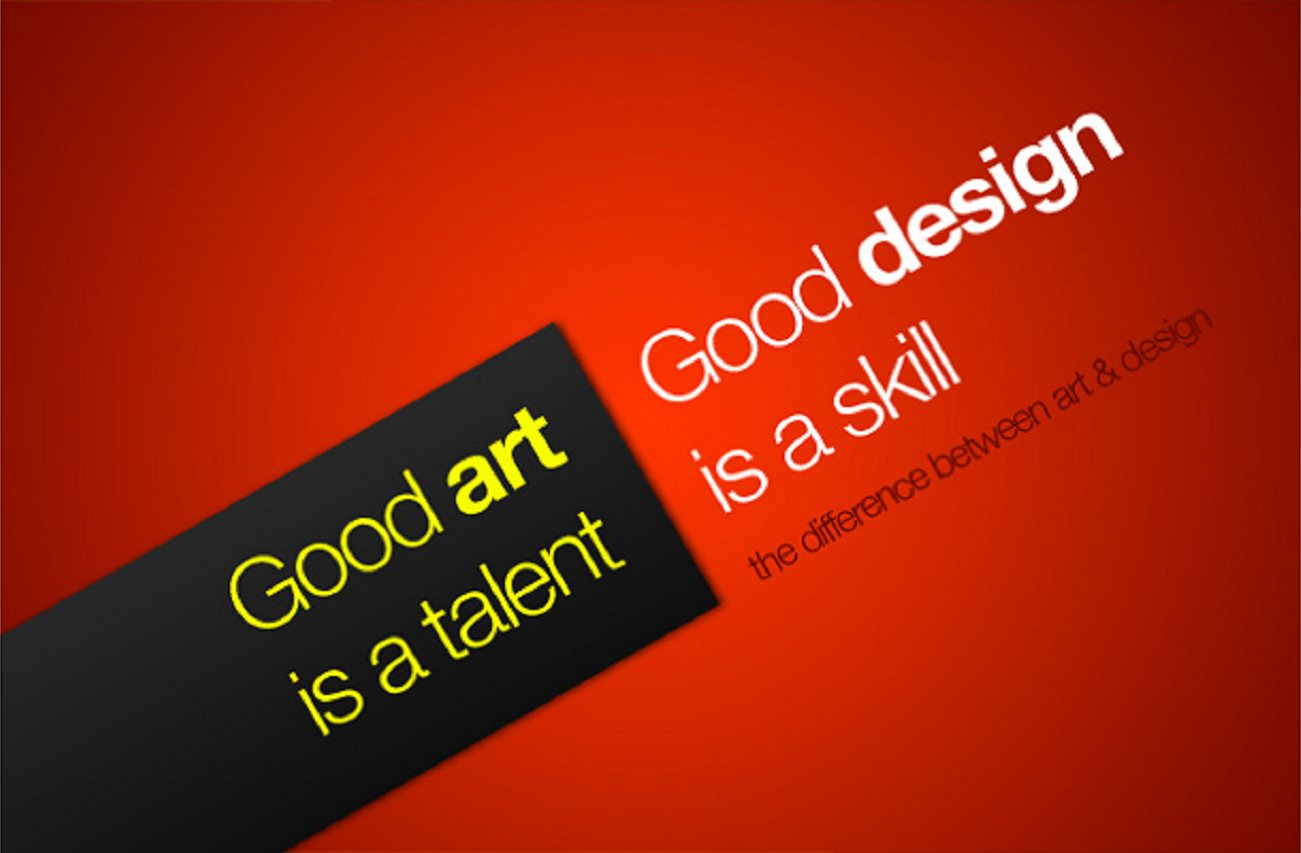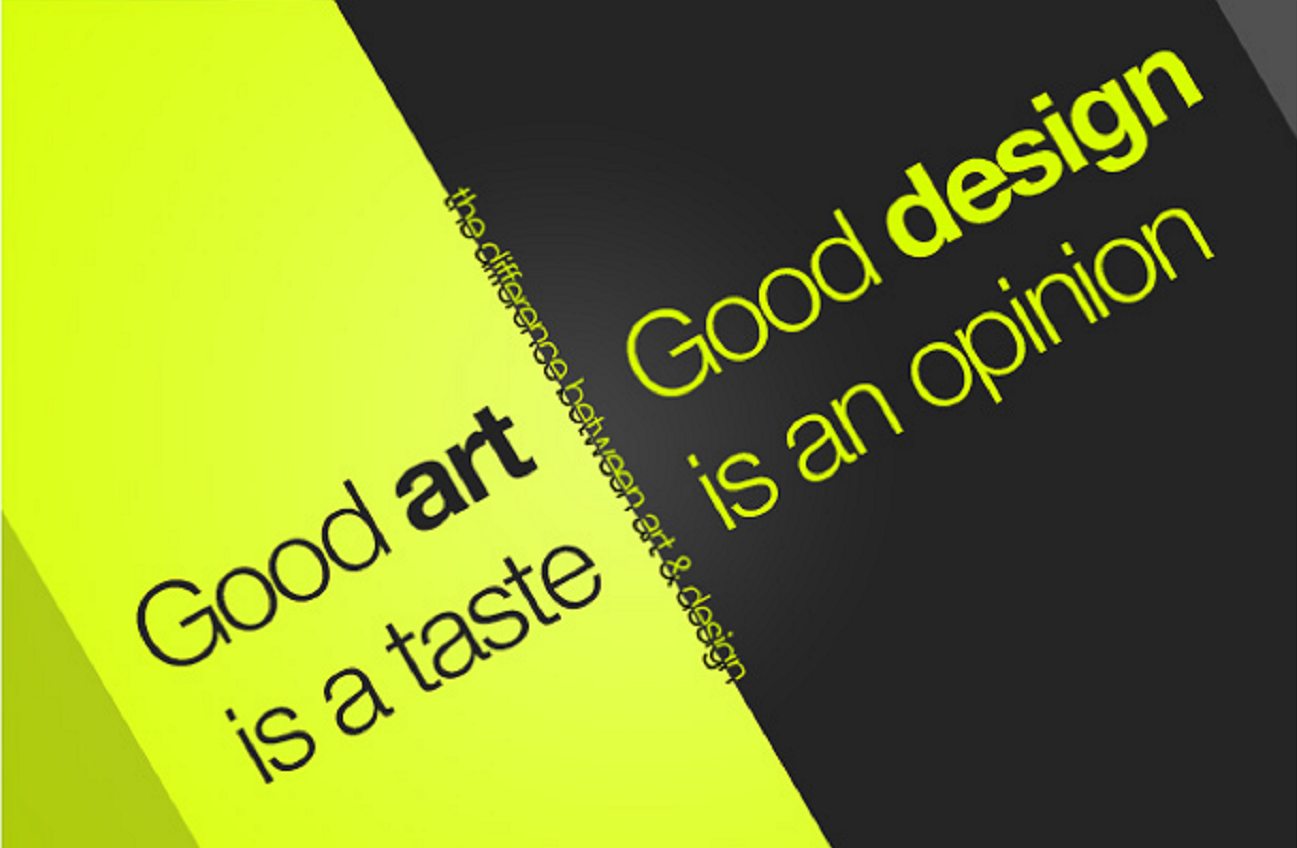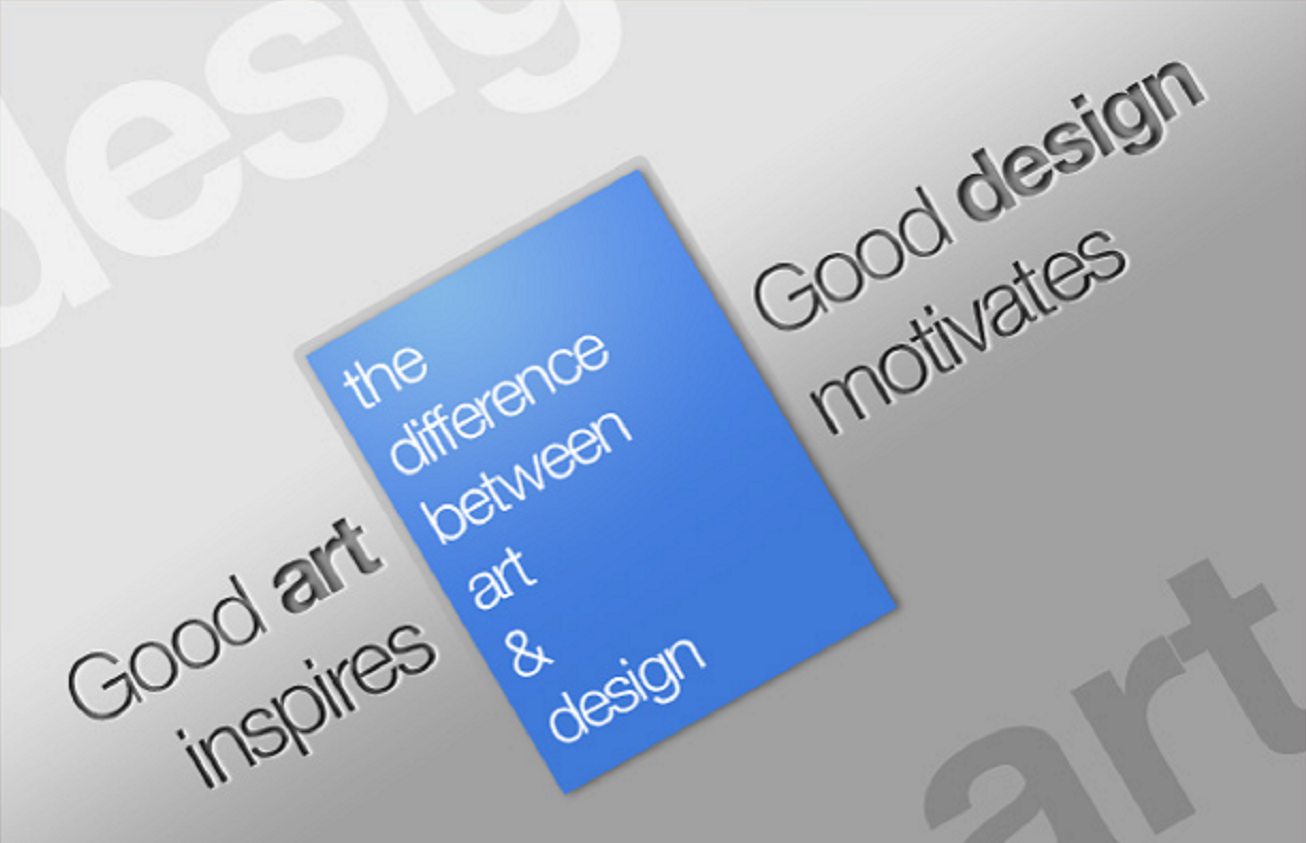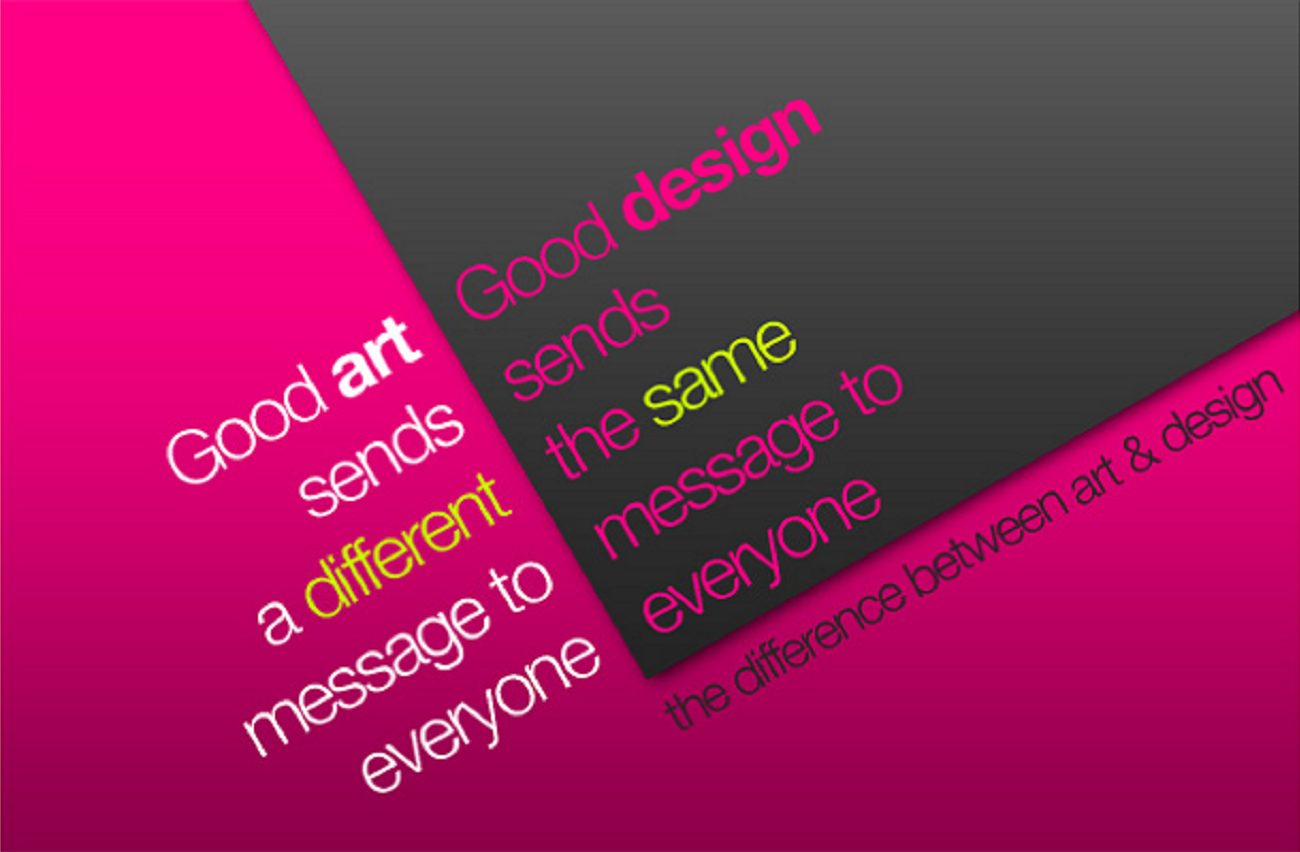The difference between art and design can be clear-cut or hazy. The two certainly overlap and are intricately intertwined. So what are the differences between art and design?
During the process of human’s producing and creating activities, practicability is conjunct with beauty, endowing materials both physical and spiritual influences, which is one of the fundamental points of human design activities. With the division of labor in society manufacturing process, art and design begin to be separated and become two distinct individuals. However, art and design are always interpenetrated and interacted from the perspective of the development track of both art and design. For example, Davinci, a great man in Renaissance, is not only a painter, but also a sculptor, architect, meteorologist, physicist, etc. In spite of the separation and differences between art and design, the two are inextricably linked.

Art is perceptual; it is beautiful and joy-making; it is for oneself; it is bardian; countless individuals come together and thus humanity spiritual evolved, which is the real purpose of art. Design is rational; it has to please its users; it is to process images with thoughts; it can endow a certain meaning to one work; it enables designers to express and realize his/her thoughts and ways of thinking. Hence there are so many differences between art and design. Put simply, the definitions of art and design are:
Art is for oneself; it is a highly bardian way of self-expression;
Design is for the others; it is based on solving the relationship of humans and things.
What are the differences between art and design from the point of creators of art and design? Artists are often gifted. Despite the fact that the studies of drawing, painting and sculpting from a young age help developing their abilities, for artists natural gifts have a bigger impact.
In comparison, design is a kind of skill that can be taught and learned. You can learn design from a zero basis and be a great designer without being an outstanding artist as long as the design goals are reached. Numerous respectable designers are famous for their concise style. They use simple color and material, but put more emphasis on size, layout and interval; mastering these skills is easy for even an ordinary man. Some designers would like to take themselves to be an artist because they create something visually attractive, something they would be proud for people to hang on a wall and admire.

Let’s talk about the differences between art and design from the point of creation. Artists don’t have to and shouldn’t take the subsequent situations of his/her artistic works into consideration when beginning creation. No mandator will restrain his/her behavior, and he/she creates things out of his own spiritual needs, which is well manifested by Van Gogh, Gauguin and other leading artists. Van Gogh didn’t take money as his goal though he also hoped to fetch a good price for his paintings. Otherwise, he could totally follow the fashion of that time and painted some economically-benefited pictures.
In comparison, there are mandators in the process of design. Designers must take into consideration that his/her designs should bring certain profits for participating merchants and that his/her works should be accepted by the user. In design activities, users come first, designers second. In some situations, designers even have to make a compromise. Hence what he/she needs to deliver should not be his/her subjective wishes but the commercial aims and the common aesthetic direction of the user. Therefore designs can fail when goals are failed to reach.

A good art is enlightening, and a good design is inspiring. Usually artists start his/her creations from a zero basis. Artistic works originate from artists’ internal perspectives, opinions or feelings. Artists share these feelings with other people, connect audiences with works, and hence inspire or benefit them. A good artistic work should be the one that can establish a strongest emotional connection between artists and audiences.
On the contrary, there is always an existing starting point when designers begin one design, either a message, a picture, a thought or a practice. What a designer need to do is not to invent, but to integrate existing things for a certain aim and express. The aim often is to motivate people to do something: to buy a product, to receive a service, to visit a place or to gain some information. Not reaching the needs of audiences can torture designers most, and the best design should be the one that most effectively delivers creators’ aims and stimulates people to conduct certain behaviors. It is one of the differences between art and design.

Another one of the differences between art and design is how audiences explain the contents of the work. Although artists may try to express only one opinion or feeling, it doesn’t mean that his/her opinion and feeling can be explained by only one way. An artistic work is linked with people by different ways because different people have different explanation on it. Mona Lisa Smile, a portraiture of DaVinci, has been discussed and explained for so many years. Why does Mona Lisa smile? Scientists explain that it’s because of the intuition coming from your peripheral nerve visual area. Romanticists explain that it’s the fruit of sweet affection. Skeptics explain that there is no reason at all.
However, design is on the contrary side. If many people think there are several explanations of the design, it can be regarded as a failure with vague intention. The basic intention of a design is to pass on messages and motivate audiences to do certain things.
Despite the differences between art and design, the two are interdependent. There are also some similarities between art and design. A design can be an art; design is concluded but not equal to art. This art vs design debate can be long-lasting, but surely an art cannot be a good one without designability and a design cannot be a good one without artistry.
To read more:
1.How to Learn UI Design from Zero-Basis
2.5 of the Most Important UX Design Skills to Please Your User
3.10 Must-Know User Experience Disciplines for Designers
 Mockplus RP
Mockplus RP
A free prototyping tool to create wireframes or interactive prototypes in minutes.
 Mockplus DT
Mockplus DT
A free UI design tool to design, animate, collaborate and handoff right in the browser.
